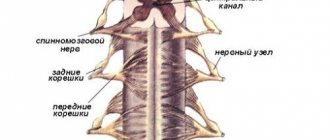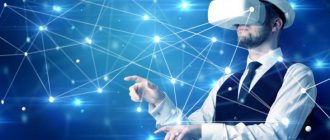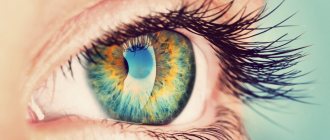We are all from birth endowed with the ability to perceive the world around us through vision, hearing, smell, as well as taste and tactile sensitivity. However, a person cannot perceive information from the outside equally well with all five senses. Each of us has a much higher ability to perceive through one sense organ than through all others. And, depending on this predominance, a person’s behavior, his character traits, etc. differ.
Based on this, all people can be divided into three types , depending on the predominance of one or another way of perceiving the world around them:
- Auditory;
- Visuals;
- Kinesthetics.
Let us dwell in more detail on the characteristics of each of these types.
Educational facts
And now some interesting facts. In Russia at the moment, a very approximate distribution by type is as follows:
- Visuals – 35%;
- Kinesthetics – 35%;
- Auditory learners – 5%;
- Digital – 25%;
And, for example, for the USA it looks a little different:
- Visuals – 45%;
- Kinesthetics – 45%;
- Auditory learners – 5%;
- Digital –5%;
If we talk about culture, we can say that Russia and the USA have visual-kinesthetic cultures. But in England there is an auditory-visual culture. At the same time, almost all ancient cultures were kinesthetic - just remember ancient Indian or Persian drawings.
At the same time, keep in mind that people of different types have their own style of clothing, their own companies, their own conversations and their own work. For example, among officials there is a very large percentage of digital and audio people, just like among the military. But at the same time, we must remember that, generally speaking, the division by type is very arbitrary, and although there really are people who use almost the same channel, they are quite few. Most people use several quite effectively, they just prefer one more. This is the channel of preference we are talking about.
And now about each type separately.
Digital representational system
Scientists identified this system of perception not so long ago. For a person with such a representative system, symbols - words and numbers - come first when perceiving the world around them. Their type of perception is aimed at logical justification of everything that happens around them. Digitals are excellent strategists. They are excellent at planning and handling details. Solving complex problems is their strong point. Information is processed and remembered step by step, sequentially, methodically, logically, putting everything on the shelves. They need a certain amount of time to process information. Therefore, new ideas, situations, people are not immediately perceived. They need time to think and comprehend.
General information about types of perception
Dividing people into visual, auditory, kinesthetic and digital in accordance with the basics of neuro-linguistic programming (NLP) allows us to identify their dominant sense organ. At the same time, one predominant sensory perception of the world in a person does not mean suppression of others. People typically have four channels through which they experience the world:
- Visual. With it, a person has a predominantly developed visual system for perceiving the surrounding reality. Color and shape matter to him.
- Auditory. The organ of hearing and the corresponding perception of the world through sounds, timbres, melodies, and volume dominate.
- Kinesthetic. The tactile function predominates. It is easier for a person to recognize this or that object by smell, taste, touch.
- Digital. The logical perception of the world dominates through the construction of an internal dialogue by a person.
The leading channel of a person’s worldview of information allows one to intensify mental activity. Thanks to it, other processes are launched in the form of memory and imagination.
There are several methods for identifying visual, auditory, kinesthetic and digital learners. The main thing is the diagnosis of the predominant modality through testing developed by S. Efremtsev. The test is available online for Internet users who want to find out their dominant type of perception.
Characteristics of auditory, visual, kinesthetic and digital learners include:
- the dominant organ involved in a person’s perception of the surrounding world;
- the influence of the leading channel of perception on character;
- correlation of the type of perception with a person’s personality type;
- a set of differences between one form of human assessment of the surrounding reality and others.
Everyday life and human activities are associated with numerous flows of information. Information can be presented in the following forms:
- The textual method of presenting information is a set of special characters written on paper or electronic media. Such symbols are numbers and letters of the alphabet.
- The graphical method of presenting information is often used to display statistical data or when there is a need to use visualization for a better understanding of the text. For this purpose, charts, histograms, drawings, charts, and tables are used.
- Telephony and radio broadcasting use radio waves and sound signals to present information.
- On television, light signals are used to present information.
- Multimedia. This type of information presentation involves the use of a computer and combines text, audio, graphic information and video.
Actions with information. What types of actions does a person perform with information?
Every day a person performs different actions. He walks, communicates, pays for travel, shops, reads, eats, etc. Other people taught him this by example or by passing on information.
A person performs actions with information when watching a movie, while playing checkers, when solving problems, when creating a recipe for a dish.
Let's take a closer look at what actions can be performed with information.
()
Search for information. Ways to find information
What is information retrieval? These are actions related to obtaining information. Let's look at examples of information search:
- To get from one metro station to another, you need to study the metro map.
- To get information about a famous painting, you can go to a museum, an exhibition or a library.
- You can find out the news by reading newspapers.
- You can study the history of the country by watching a documentary film.
- To prepare a delicious dinner, just watch a cooking show, ask friends for advice, or look for recipes on the Internet.
Before starting any action, it is necessary to find the information that will be needed to complete it, select sources and means of obtaining it.
Information carriers. Types of information storage
To store information (addresses of friends and colleagues, spelling rules, formulas and meeting times), a person uses his memory, writing objects or digital devices.
We are talking about types of information storage and types of information storage devices.
What types of storage media are there?
The ancestor of paper and books was Papyrus (3000 BC).
To preserve the landscape, artists painted paintings on fabric.
The architectural structures of the architects left a memory of the historical era.
Photography was invented in 1839, and the film industry was launched in 1896.
Music notation allows you to store sound information on paper, while tape recorders allow you to store sound information on magnetic tape.
So a person uses a paper notebook, magnetic disk, paintings, film, photographs and drawings to store various types of information.
()
Today, new types of electronic storage media have emerged. These are lightweight drives that can hold a large amount of data and allow you to preserve centuries-old knowledge of mankind:
- memory card;
- Flash card;
- HDD;
- CDs, DVDs.
Types of information transfer
Information is transmitted through newspapers, television, photographs, videos, social networks, etc.
Types of information according to the form of transmission are characterized by the presence of a source and receiver of information.
Let's look at examples of types and methods of transmitting information using examples.
- Children play “Battleship” and give each other commands for action. This is an exchange of information.
- The family (receivers of information) watches news on TV (source).
- Preparing a report on biology by a schoolchild (receiver) involves working with reference books, maps, illustrations, and the Internet (sources).
- Meadow flowers (source) use aromas to inform insects (sink) that nectar is ready.
- The bear (receiver), analyzing changes in nature (source), learns about the onset of winter and goes into hibernation.
()
People receive information from nature less and less often. More often he uses devices or modern types of information transmission channels: telephone, computer network, telegraph, radio, Internet.
There are types of information sources and their characteristics:
Primary sources are initial information: the result of an experience in a chemistry lesson or a historical document (First Decree of Peter 1, Manifesto “On the granting of liberty and freedom to the entire Russian nobility”).
Secondary sources – transformed information after processing: a newspaper article about a past event based on primary sources and eyewitness accounts.
Data processing. Information processing devices
The main action performed on information is information processing. Information processing is thinking, analyzing and modifying information.
Examples of information processing:
- search for a chapter in the table of contents of the textbook;
- searching for a phone number in a directory;
- translation of text from Russian into French;
- filling out the logbook;
- performing algebra calculations;
- determining the departure time of the Ekaterinburg - Moscow train;
- determining the route from point A to point B;
- coding information using Morse code;
- constructing a chart using data from a table;
- document scanning;
- solving rebus and sudoku puzzles;
- file archiving;
- analysis of a physics problem;
- preparing a recipe for a dish;
- image editing;
- text formatting;
- correcting mistakes in essays;
- diagnosis of a disease by a doctor.
()
Without information processing, a person would not be able to perform many tasks. When a person stands at a signalized intersection, he evaluates the data received from the traffic light. A person processes these signals and gives the body a signal to action: “Stop!” or “Move!”
There are two types of information processing:
- processing, which results in new information that is different in content from the initial information (text editing);
- processing, as a result of which the form of information changes, but the content remains unchanged (text formatting).
There is also a distinction between conscious and unconscious information processing.
- Unconscious processing of information by humans. One day, touching a hot iron, a person received tactile information. Based on the experience gained, he concluded about the danger and will avoid it in the future.
Conscious information processing. The student learned the rules, formulas and solution algorithms during lectures and uses this knowledge when doing homework.
()
The ratio of visual, digital, auditory and kinesthetic learners
Many people mistakenly believe that discretes have great difficulty communicating with people because they have difficulty opening up to others, which is why discretes are labeled as complex and closed people.
Discretionaries treat people rather coldly
Perhaps it is because digitals do not like to communicate with stupid people that they are considered so closed.
Dividing people into smart and stupid is a common practice for discrete people. In their opinion, the majority do not deserve their attention and time.
Thus, communicating with a person of this psychotype can be a little difficult.
Basically, a discrete can be identified by his perfectly straight posture and his head held high. In most cases, discrete hands are kept in a buried position, that is, crossed.
The movements of such people will be more abrupt than smooth. You might think that they are very arrogant. One of the main features of a discrete person is his manner of maintaining physical distance while communicating with another person.
Usually people with a discrete psychotype are quite educated and intelligent. When talking with such a person, it is best to rely on facts, logical chains and connections. Digital will never talk to you about the aesthetics of the world around you, about its beauty and at the same time admire it.
Empathy for people of this psychotype is an alien feeling. It will be very difficult for him to perceive information dressed in emotions. Therefore, the more specifics, the more mutual understanding.
How to learn English auditory
Auditory learners perceive information well by hearing.
You need to hear everything and be heard. Auditory learners live in a world of sounds, so English is quite easy for them to hear. When you read a rule in a textbook, do some exercise, be sure to spell everything out. The communication technique was simply created for you! Tips for auditory learners:
- Ask your English teacher to recite all important information. After each new rule, let him give you vivid examples of its use, you will quickly learn vocabulary and grammar in context.
- Listen to various podcasts and audio lessons, you can record them on your phone. This way the “tutorial” will always be at your fingertips. Read our article on how to learn English with podcasts. And take advantage of a selection of the 6 best sites with podcasts in English.
- Try to speak English as often as possible. It doesn’t matter if among your friends there are no people who want to learn a foreign language. You can talk to yourself, read books out loud, tell yourself how your day went.
- Your weak point is spelling. Do you want to write correctly? Don't neglect homework and cramming difficult words.
- Listen to famous people's speeches in English. Try to imitate them, copy their accent, intonation, and manner of speaking.
- Almost every city has English language clubs or couchsurfer meetings. There you can talk yourself and listen to foreign speech. These are free events, we recommend attending them more often.
- Songs, films and news in English will help you remember the rules for using new vocabulary in context.
How are types of perception determined?
Diagnostics of the type of perception
Knowing your type of perception helps a person learn more effectively. There are special techniques that can be used to determine the dominant type of perception.
To begin with, a person can observe his mental activity. Where does the presentation begin: with a picture (visual) or with a feeling (kinesthetic), with sounds (auditory) or with logical meanings (digital)? In addition, the dominant type of perception reveals itself in speech: people tend to more often use those words that have a connection with their dominant perceptual system.
You can also determine the type of perception by the dominant short-term memory. A visual person is a person who finds it easier to remember graphic information. An auditory learner is a person who remembers better by hearing. If for effective memorization a person needs to rely on bodily sensations, then he is a kinesthetic learner. Digitalists are those who focus on logic when memorizing.
In addition, S. Efremtseva developed a method for determining the dominant perceptual modality.
What is the name of the information processing device?
The performer can be not only a person, but also a special device. A computer is an excellent information processing tool that allows you to solve universal problems. The use of computer technology speaks of automated information processing. Thanks to the processor power and RAM capacity, large amounts of data can be processed in a short time.
An ultra-fast tool, a supercomputer, has a performance of over 100 MFLOPS (MFLOPS - one hundred million operations per second).
()
Information processing technology includes knowledge about tools and means that are capable of changing objects (data, image, video, etc.).
The technological process of information processing includes:
- data collection and formatting;
- filtering and sorting;
- data archiving;
- data protection;
- data transportation.
Information processing methods:
- Logical: comparison method, development of a system of indicators, construction of tables and graphs, method of expert assessments, heuristic methods.
- Mathematical: grouping method, calculation method, linear and nonlinear programming, decision tree construction method, analysis method.
Differences between people by psychotype
The differences will concern many things, for example, the organization of thinking, memory, and methods of learning. A kinesthetic person remembers everything with his body, his muscles - the body has its own memory. This method is very effective for learning to ride a bike or swim, but for remembering how to solve an integral or a phone number it can be quite inconvenient.
In order to remember a phone number, a kinesthetic learner must write it down with his own hand, an auditory learner must pronounce it, and a visual learner only needs to remember what it looks like. The visual person loves information in the form of graphs, tables, films; he needs something to look at. At the same time, he is able to “see the entire sheet.” The auditory learner usually needs to say all this inside himself (remember the alphabet).
Kinesthetics need to be touched, done, moved. He will immediately begin to figure out exactly how to do something, and what needs to be pressed in order for this thing to rattle, and preferably in his hands. The visual learner will most likely ask to show how this is done, and the auditory learner will ask to tell you in more detail. Digital will first of all ask to see the instructions and will first study in great detail the power consumption and water consumption per kilogram of laundry.
In practice, this can be applied as follows. For example, you sell a vacuum cleaner or a sewing machine. Give the visual reader a colorful brochure with drawings and photographs, show the device and note how pleasant the design is to the eye and the beautiful color ratio. Put this sewing machine in the hands of a kinesthetic student and explain what to press and what to turn, and let him try for himself how convenient it is.
It is advisable for an auditory speaker to talk for a long time about anything, just not in a monotonous, but in an expressive voice, highlighting important points with intonation, emphasizing the noiselessness or melody of the sounds emitted. Post digital certificates, documents, technical specifications, preferably on a piece of paper with a large number of numbers and seals. And talk only to the point, about the functionality and usefulness of this device.
I once observed a married couple at my psychological appointment. She is a well-groomed, slender, hair-to-hair blonde, with a taut back. Having aligned her legs in high heels evenly to each other, this beauty - a woman with her head held high - gracefully sat on the edge of the chair. “A very uncomfortable, but impressive-looking pose,” I thought.
And he is a heavy, squat, middle-aged man in a stretched sweater and wide jeans, unshaven, and sloppy-looking. At the same time, unlike his wife, who demonstrated an ideal appearance, he conveyed with his whole being a feeling of freedom: in an open, relaxed position, he sat on the sofa closer to the window and breathed regularly, taking in fresh air.
What is information systematization?
Systematization of information is the processing of information that leads to a specific form: plan, list, table, diagram or diagram. You can systematize products in a toy store, a list of students in a class, friends’ addresses in an address book, etc.
Microsoft Excel is one of the programs for organizing information. It allows you to structure information, sort and filter, carry out calculations using formulas, and build graphs.
Sorting can be done alphabetically, chronologically, by numbers (in ascending or descending order), by date and time.
()
Description of each type of perception
Such a person can be identified by a number of signs:
- frequent use of words with a pronounced emotional connotation (“excited”, “goosebumps”, “I’m delighted”);
- frequent touching of the interlocutor;
- close distance with a person when talking;
- restlessness;
- emotionality;
- better assimilation of information through movement and touch.
A kinesthetic learner understands the world well through personal experience. He prefers practice to theory. At the same time, it is important for him to take direct part in the process. People of this type are more focused on taste and smell than others. It is important for them to personally touch or try the item in order to draw the necessary conclusions.
Kinesthetic learners are active people. They can be given a precise definition. These are workaholics who do not tolerate inaction. Kinesthetic people do not have good attention; they have difficulty concentrating on anything for a long time. For this reason, they do not like routine and monotonous work.
Kinesthetics have a special psychological portrait. Despite the desire of such people to be at a minimum distance from the interlocutor during a conversation, they are selective in communication. A kinesthetic person can only let someone close to him who has won his trust.
Like visual people, people of this type do not perceive oral information well. It is easier for them to explore the world through visual data and through personal contact. For a kinesthetic learner, it is physical contact with a loved one that is important. Comfort has a major impact on it. Any inconvenience provokes severe irritation in the kinesthetic student. Such people love conversations related to feelings and sensations. Emotional exchange with the interlocutor is important for them.
Each type of perception has its own characteristics. It’s worth figuring out who the visual, auditory, kinaesthetic and digital are.
How to learn English digital
Digital learners should use a variety of methods to learn English to achieve the desired result. So we have reached the mixed type. We think that many have already guessed that it is best for digital professionals to use all the above tips in combination. But there are several features:
- Digital people love clear rules and formulas. We recommend studying using modern authentic English language textbooks. They break down the grammar of the English language and provide various educational tables and diagrams.
- The logic of constructing the material is important to you, so we recommend studying with a teacher. Without the help of an experienced mentor, creating an effective and logical training program is virtually impossible.
- Try to explain the material you have studied to another person. At the same time, you will “pass it through yourself” and independently prepare a plan for a logical presentation of information. Using this technique, you will thoroughly understand even the most complex material and fix it in your memory for a long time.
These are our recommendations, but remember, every person is unique. Choose the learning methods that suit you. We hope you will now find it easier to learn English. We wish you fun and effective classes!
How does the type of perception influence the learning process?
Knowing the characteristics of your own perceptual system helps organize the learning process.
The process of presenting information for visual learners must be accompanied by clarity. They have good skills in working with text and, if desired, quickly master the technique of speed reading. They remember information well by making mind maps or graphs, working with demonstration models, and gaining knowledge through experimental activities.
Important! Extraneous sounds will not interfere with the concentration of the visual. With the TV on, he will be able to prepare for the exam just as well, using charts and tables, as in silence.
The main channel of perception of educational material for an auditory child is hearing. Lectures are comfortable for him. He learns new material well by participating in discussions and conversations.
For kinesthetic learners, the learning process should involve the possibility of movement and practical actions. The most suitable forms of organizing the educational process for him are practical and laboratory work.
Important! These people have unstable attention. However, their advantage is the rapid switching from one activity to another.
Digital students excel in logical disciplines and programming. Computerized learning suits them. The material will be absorbed by the digital if he understands its logical basis, and new information will be superimposed on his existing knowledge and organically fit into his picture of the world.
How to learn English visually
Visual learners find it easier to learn new information through visual images.
All the ways to learn English with pictures are perfect for you. Do not neglect manuals and various educational materials, they will help to consolidate in your memory the information you heard from the teacher. Tips for visual learners:
- You need to not only hear the information, but also see it. Therefore, we advise you to write down everything you want to memorize and remember for a long time. You can not only write a new word, but also draw a small association picture for it.
- Tip for beginners: A good visual memory allows you to use the following effective method for learning new vocabulary: label the objects in the house. By constantly looking at words, you will significantly expand your vocabulary in just a week.
- Learn English in pictures, read our recommendations in the article “Funny Pictures: 8 Fun Ways to Learn English.”
- For learning a large number of new words, so-called Picture Dictionaries are ideal.
- Start a diary or blog on the Internet, try to write daily entries in English.
- If you are learning English via Skype, use a webcam; it is important for you to have eye contact with the teacher.
- Visual learners sometimes have problems with listening to foreign speech. We have all heard about the language barrier and know almost nothing about the “hearing barrier,” but it occurs quite often. But you can get rid of this problem if you constantly practice listening and train your ears to listen to English speech.
- Watch movies, TV series, news, videos with subtitles. Gradually, your ears will get used to the sound of English speech, and you will be able to watch videos without text.
- After you begin to perceive speech by ear, start studying English audio lessons. Use special materials for beginners: on such recordings, native speakers speak slowly and clearly.










